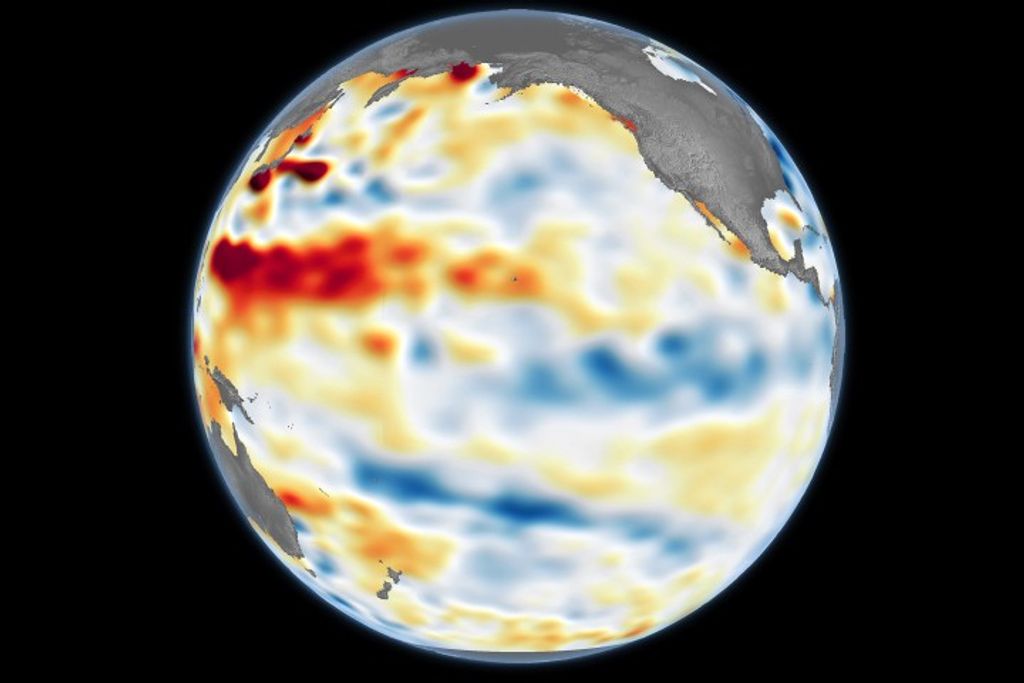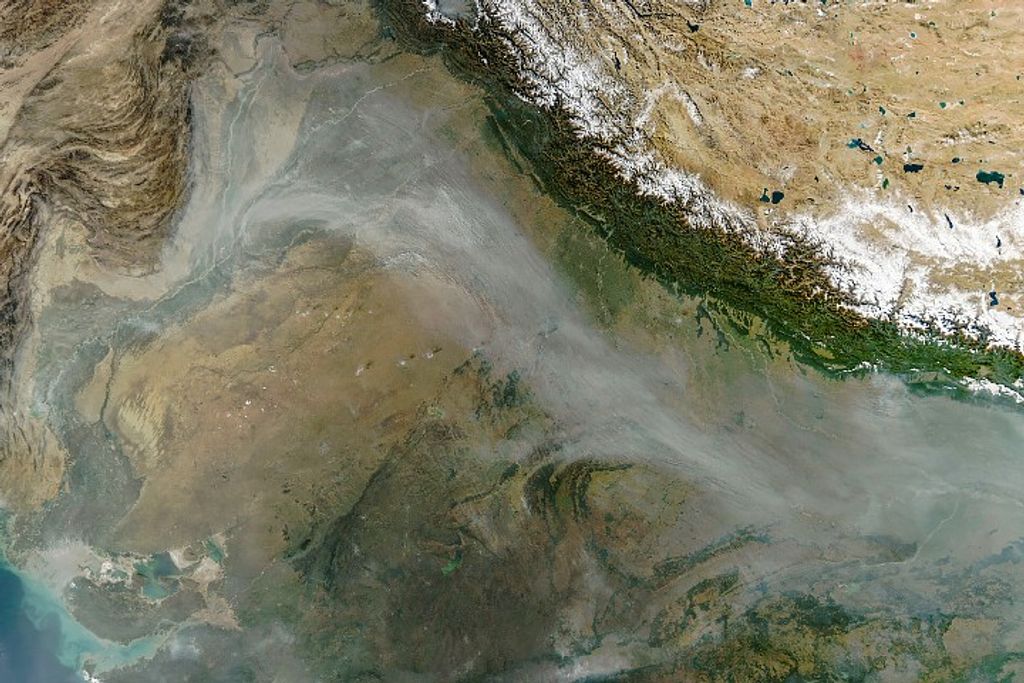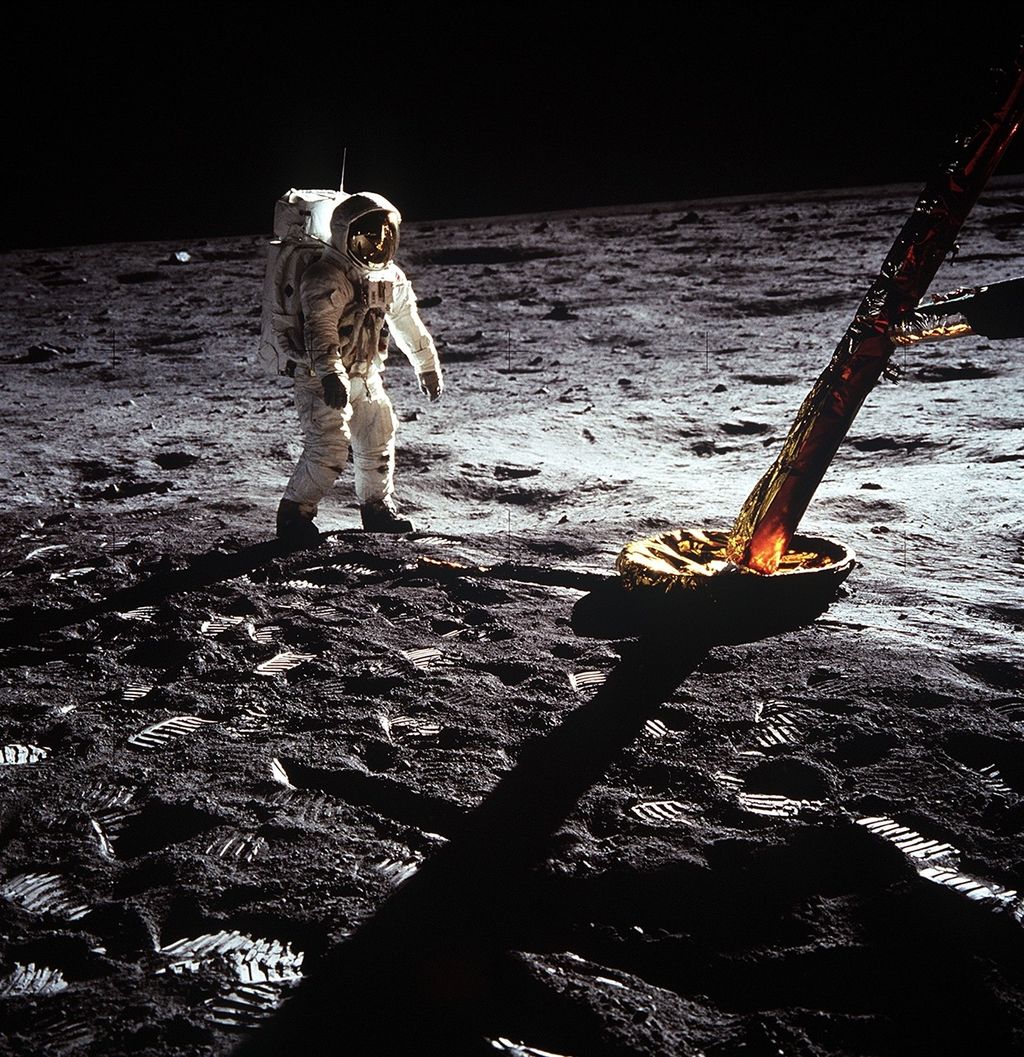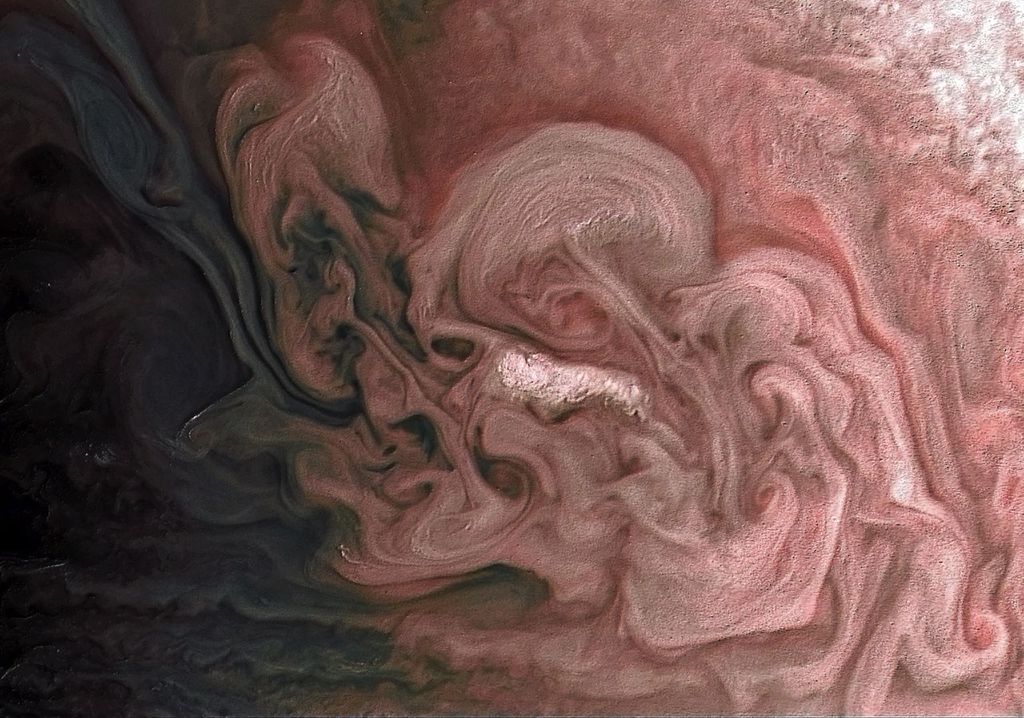1 min read
Neptune’s Blustery Weather in Primary Colors
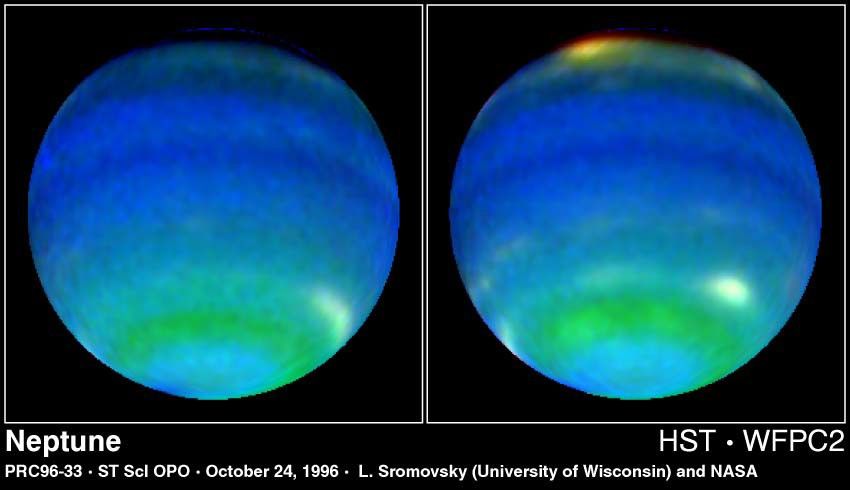
These two NASA Hubble Space Telescope images provide views of weather on opposite hemispheres of Neptune. Taken Aug. 13, 1996, with Hubble's Wide Field Planetary Camera 2, these composite images blend information from different wavelengths to bring out features of Neptune's blustery weather. The predominant blue color of the planet is a result of the absorption of red and infrared light by Neptune's methane atmosphere. Clouds elevated above most of the methane absorption appear white, while the very highest clouds tend to be yellow-red as seen in the bright feature at the top of the right-hand image. Neptune's powerful equatorial jet - where winds blow at nearly 900 mph - is centered on the dark blue belt just south of Neptune's equator. Farther south, the green belt indicates a region where the atmosphere absorbs blue light.
The images are part of a series of images made by Hubble during nine orbits spanning one 16.11-hour rotation of Neptune. The team making the observation was directed by Lawrence Sromovsky of the University of Wisconsin-Madison's Space Science and Engineering Center.
- Object NameObject NameA name or catalog number that astronomers use to identify an astronomical object.Neptune
- Release DateOctober 24, 1996
- Science ReleaseHubble Makes Movie of Neptune’s Rotation and Weather
- CreditLawrence Sromovsky (University of Wisconsin-Madison) and NASA
Share
Details
Claire Andreoli
NASA’s Goddard Space Flight Center
Greenbelt, Maryland
claire.andreoli@nasa.gov









